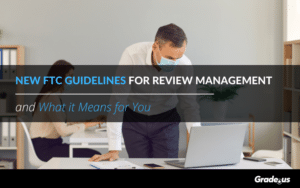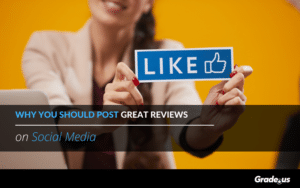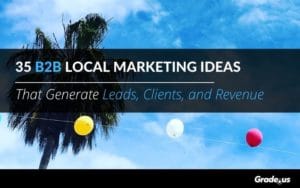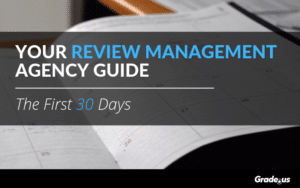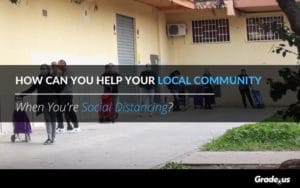Is your local business forgettable, easy-to-ignore?
If you're running a local business, you know the value your product or service provides. That's the problem, your prospects don't. It's tough to draw more of them into your business because you're a hyperlocal business.
You're a tiny fish in a large ocean.
The options your customers have is enormous. Odds are, they can find an online or offline competitor who's willing to give them exactly what they want. Some of your competitors are even willing to take a loss to win a customer.
How are you supposed to compete with that?
You can't compete... if you take the conventional route
If you're a hyperlocal business, you need to reach a very specific audience. You're not looking to serve everyone in your industry because you can't. You're tied to a specific location for one reason or another.
- You're confined by license and certifications. Such as, an attorney, electrician or skilled producer who's licensed in a specific part of the state.
- You have ties to a particular region or area. Location is an inherent part of your product or service. A Realtor in Los Angeles typically won't rely on clients from San Francisco to sustain their business. If anything, they'll probably attract a specific clientele from a specific part of L.A.
- You're serving a specific region or locale. Dry cleaning pick-up and delivery, diaper, food and grocery deliveries, as well as child care, are all examples of region specific, hyperlocal businesses.
The typical approach many local advertisers take is to blanket their target audience with ads. In fact, it's not uncommon to see ads from a local or region specific provider who isn't anywhere close to your area.
The negative effect on their conversion rate is automatic
But, why do these advertisers do this? Don't they know better? Couldn't they focus their advertising on the specific customers in their area?
Maybe.
If they're using the right advertising platform.
What?
The right advertising platform? Aren't they all the same?
No, unfortunately. Advertising platforms aren't automatically tailored for hyperlocal advertising. Some ad platforms claim to offer it (but don't do it very well), others don't offer it at all and many aren't able to implement it in a way that generates meaningful results.
Which is exactly what hyperlocal businesses need.
That's the question though. Which advertising platform will generate the greatest return for hyperlocal businesses?
Getting the most bang for your buck is impossible...
If you're unfamiliar with hyperlocal advertising. So, before we delve into which advertisers will generate the most bang for your buck, we need to make sure we have a good handle on hyperlocal advertising.
What exactly is hyperlocal advertising?
Hyperlocal advertising allows marketers to use a smartphone's GPS data to serve ads to a target audience in a precise geographic market.
Hyperlocal advertising is used in a few specific ways.
1. Geo-fencing: A marketer creates a geographic fence around a specific area. Any customers in your target audience who pass through or are in this zone see your ads.
2. Retargeting: Customers who were in your geo-fence are tagged and retargeted with ads. Ideally, these ads make an irresistible offer that lures customers in.
3. Contextual ads & insights: A hyperlocal region that's dependent or based on contextual data. This refers to a smartphone user's physical location.
As a marketer, you may end up using one or all of these methods to generate the response you need.
If you're a dentist, you could:
- Target geo-fenced searchers who entered the query, “kids dentist in Chicago.”
- Offer a discount for their kid’s first visit.
- Retarget geo-fenced visitors, offering an additional incentive/gift for the first 10 customers who respond.
- Target your customer’s friends, families and neighbors by creating a contextual fence around each of their neighborhoods.
If you're an attorney you could:
- Target corporate prospects in select metropolitan areas using contextual ads.
- Advertise via social, display and search advertising.
- Provide corporate prospects with a free guide, checklist or quiz outlining risks to their business.
- Retarget contextual, geo-fenced customers with a free offer to fix their problem.
- Limit the offer to X clients, to control your time, limit your loss and maximize your conversion rate.
If you're a plumber you could:
- Target geo-fenced searchers in major metropolitan areas.
- Use triggering events to serve ads to geo-fenced searchers (e.g. heavy rains coming, free sump pump check-up).
- Disqualify searchers in specific high cost/low margin areas (e.g. rural areas).
- Advertise via search to capture initial attention, retarget via display and social networks to increase conversion rates.
- Give customers a steep discount on home maintenance subscription services.
Hyperlocal advertising isn't a one size fits all proposition.
That's really good news.
Why?
You know your business, product or service best. Hyperlocal advertising gives you the ability and freedom to customize your ad campaign around your business.
Your success depends on the ad platform you choose
Choose the wrong ad platform and success becomes unlikely.
Okay...
What does the right ad platform look like? How does it work and what makes it so significant?
The right ad platform...
1. Has large amounts of your target audience (people who are willing and able to buy) on their platform.
2. Gives you the ability to target your audience via geo-targeting/geo-fencing, retargeting and contextual ads.
3. Gives advertisers multiple call-to-action options (e.g. website visits, click-to-call, get directions, direct messages, etc.).
4. Enables advertisers to retarget visitors natively or via 3rd party tools.
5. Integrates with or provides analytics you can use to analyze campaign performance effectively.
This looks like fairly standard stuff, right?
These expectations aren't unreasonable, but you'd be surprised at the number of ad platforms that don't, won't or can't provide you with these details.
With that in mind, here are five paid hyperlocal ad platforms you can use to get the most bang for your buck.
Ad platform #1: Facebook Ads
Launched in 2014, Facebook reach ads gives hyperlocal businesses the precise targeting options they need to focus on a specific radius, neighborhood or locale. With reach ads, you're able to reach customers on Facebook and Instagram who are close to your business.
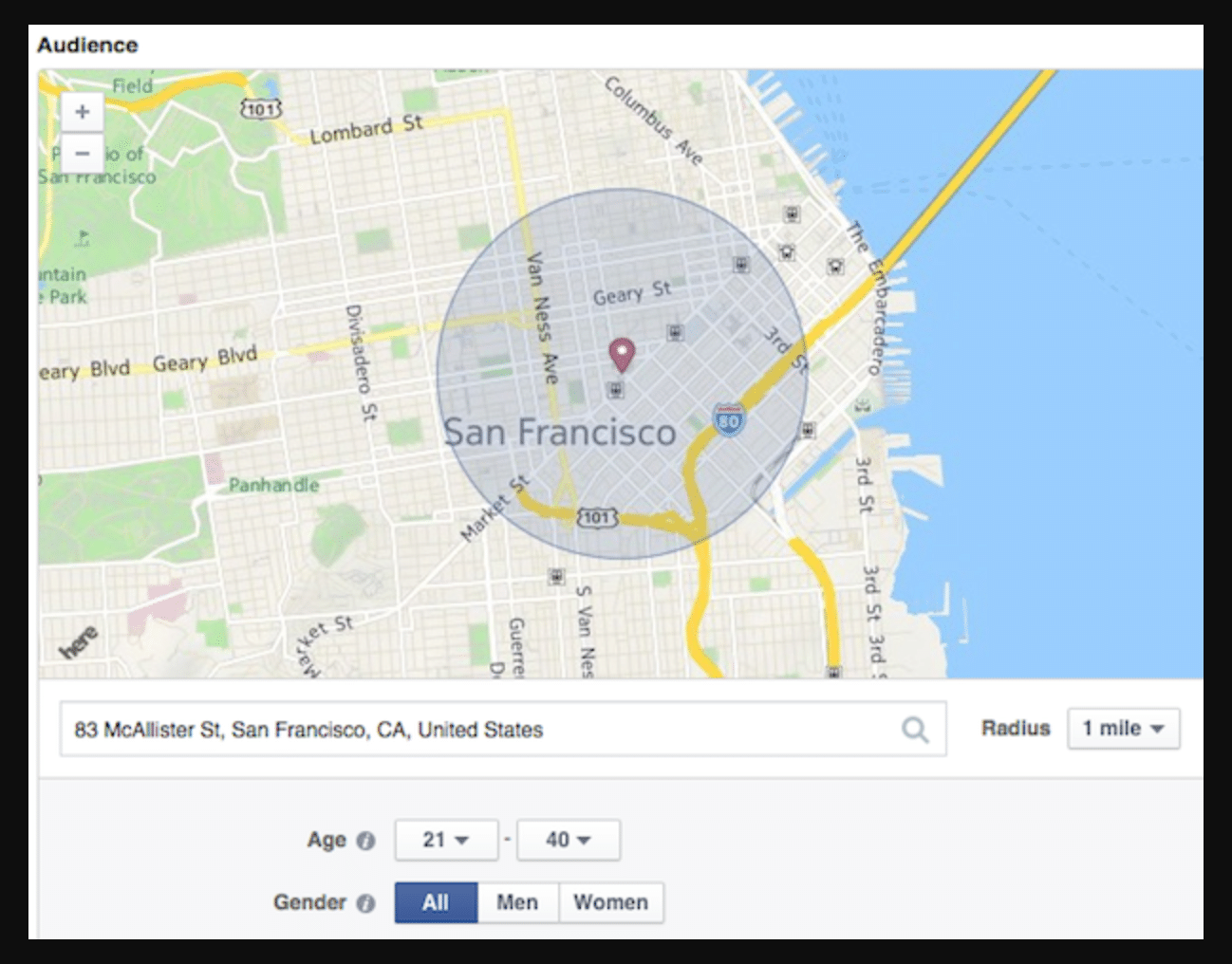
Pros
- Incredibly precise, hyperlocal targeting
- Uses Facebook’s targeting options including demographics, interests and behaviors
- Works with Facebook’s call-to-action buttons (e.g. get directions, click-to-call, direct message, etc.)
- Ability to sort prospects by a combination and/or variety of filters (e.g. geography + language)
- Retargeting ready, perfect for cold, warm and hot traffic campaigns
Cons
- Audiences must meet a minimum required size
- Only customers who have location services enabled on their mobile devices will be targeted
- Ads are display oriented which could possibly mean a lower conversion rate
Getting the most bang for your buck
If you're looking to build brand awareness or introduce your target audience to your product or service, Facebook ads is right for you. Use incentives, special offers and appealing content to approach cold traffic (i.e. people who have never heard about you).
Not sure if Facebook Ads is right for you? Use Perry Marshall's 10 question quiz to find out.
Facebook retargeting is a cost effective way to attract and convert people in your hot traffic campaigns. The more relevant your offer is to their interests and behaviors, the more likely people are to view, click and convert.
It's a great idea to ensure that you have a business page that's compelling and complete. Ask customers to post honest reviews of your product or service to maximize the results from this strategy.
Ad platform #2: Google Local search ads & Nearby Ads
It started in 2015. Google Trends began showing a dramatic spike in hyperlocal search queries. "Near me" search queries jumped primarily because Google began suggesting "near me" queries, modifying searcher behavior somewhat.
Queue Google's local search ads and nearby ads. These two platforms enable you to target hyperlocal prospects in your audience directly. Local search ads enables you to respond to searcher intent, while nearby ads sends users a notification of your app, website, product or service they can accept or reject.
Pros
- Serve ads to customers in your radius, region or locale
- Serve ads with apps, beacons, devices and other configurations via Nearby
- Works with various call-to-action extensions (e.g. website traffic, click-to-call, get directions, etc.)
- Initiated and driven by searcher intent
- Provides advertisers with the ability to sort, filter and segment customers by keywords
- Advanced remarketing allows you to target past visitors, including: dynamic remarketing, mobile app users, people who’ve viewed your YouTube videos and even email subscribers.
Cons
- Click-to-call extensions are not available for use with local search ad formats
- Can be extraordinarily expensive, especially in highly competitive niches (e.g. financial services, real estate, etc.)
- Comes with a downside advanced marketers call “the stupid tax” – considerably large expenses and budget waste due to poor account management
Getting the most bang for your buck
Google AdWords is still an incredible option for hyperlocal advertisers because it connects you directly to searcher intent. It's one of the best ways to market your business, spending a dollar to get back two. But it comes with a significant downside.
You'll need to know what you're doing.
Tightly themed keywords, ad groups and landing pages. Good budget controls, bidding best practices and good account management. These are must-haves if you're looking to run a successful local campaign.
Ad platform #3: Waze local
Waze is another Google product. Unlike Local search ads which are designed to work with Google Maps and are driven primarily by searcher behavior, Waze is social.
Waze depends on individuals to tag products, services and even police officers on their route. What makes Waze so helpful is the fact that it uses location based marketing, to introduce customers to businesses as they approach.
It's also helpful because ads are also displayed when users use Waze's search function.
Pros
- Geo-fencing introduces daily commuters and travelers to your business consistently
- Unique ad units include pins, takeovers, arrows and location based search ads
- Unique call-to-action formats e.g. drive there (turn-by-turn navigation to your business), save location, save for later (with prompts), save offer and call now
- 65+ million monthly active users
Cons
- CPM pricing means you’ll need to test and tweak your ads regularly to maximize performance
- May require more monitoring to ensure your campaign performs as expected
- Is viewed by customers as an annoying interruption, more so than existing ads
Getting the most bang for your buck
Waze works well if your business serves a specific neighborhood, region or locale. Remember how we talked about restaurants, dry cleaning, child care, and food service businesses earlier? Waze works well if your business fits into these niches.
Car dealerships, brands sold in local stores, gas stations, hotels - these establishments are all a great fit. Specialized services e.g. legal or accounting?
Not so much.
Ad platform #4: Pandora
The internet radio streaming service and automated music recommendation engine, has 1/4 of the US population on their network, with listeners spending 20.7 hours on Pandora's platform each month. More than Facebook, YouTube or Spotify. They're #1 in 86 markets, beating broadcast radio formats. This means they have potential customers who spend their time in and around your geo-fenced area.
When it comes to hyperlocal advertising, Pandora is the sleeper hit.

What makes Pandora so significant is the type of content they provide. When most people think of Pandora, they think of music, right? But, thanks to their podcast deal with Serial, Pandora has become an instant talk radio giant.
That's significant because it means customers are interested in learning and discussing. Teach prospects what they want to know and your hyperlocal business has everything it needs to make a sale.
Pros
- 89.4 million monthly active users
- Unique ad formats e.g. 15/30 second audio ad + companion tile and banner ads
- Reach hyperlocal customers wherever they’re listening even if they’re not currently in your geographic area
- Display + audio = increased listener engagement and higher conversion rates
- Advertisers have 100 percent of listener attention both with audio and display companion ads
- Offers audio, display and video ad formats
- Can combine geographic targeting with 11 other metrics including: demographics, interests, activities, shopping, lifestyles, life stage, financial attributes and more
Cons
- Listeners are often distracted and away from their mobile device
- To be successful, offers should be relevant and precisely timed
- Listeners may be listening to multiple streams
- Listener fatigue due to more commercials on their platform
- Listeners turned off by ad content/topics (e.g. political ads)
Getting the most bang for your buck
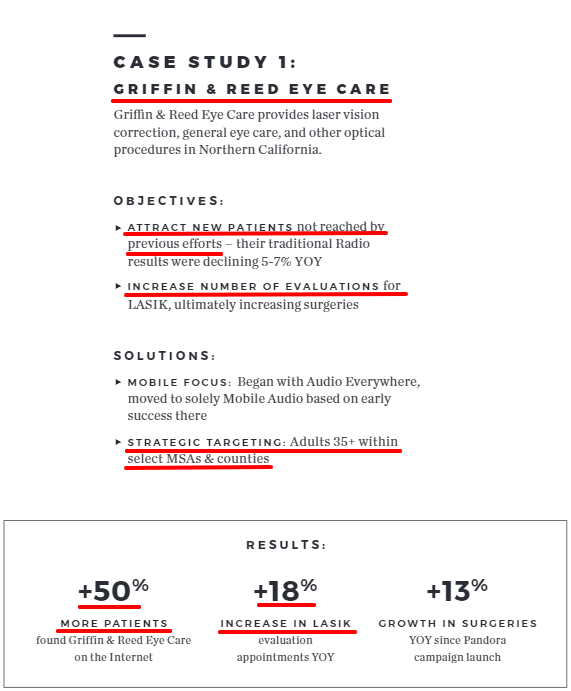
Ad platform #5: YP
We're not using phone books as much these days, but that doesn't mean the Yellow Pages are dead. More than 60 million people visit YP.com or the YP app each month to search for businesses offering products and services. More than 20 million businesses are listed on YP.
YP's local ad network is what makes them so significant.
The YP ad network includes brands like Yelp, Yahoo!, Mapquest, CitySearch and UrbanSpoon. A ComScore report shows that YP customers are niche but more responsive than the average searcher.
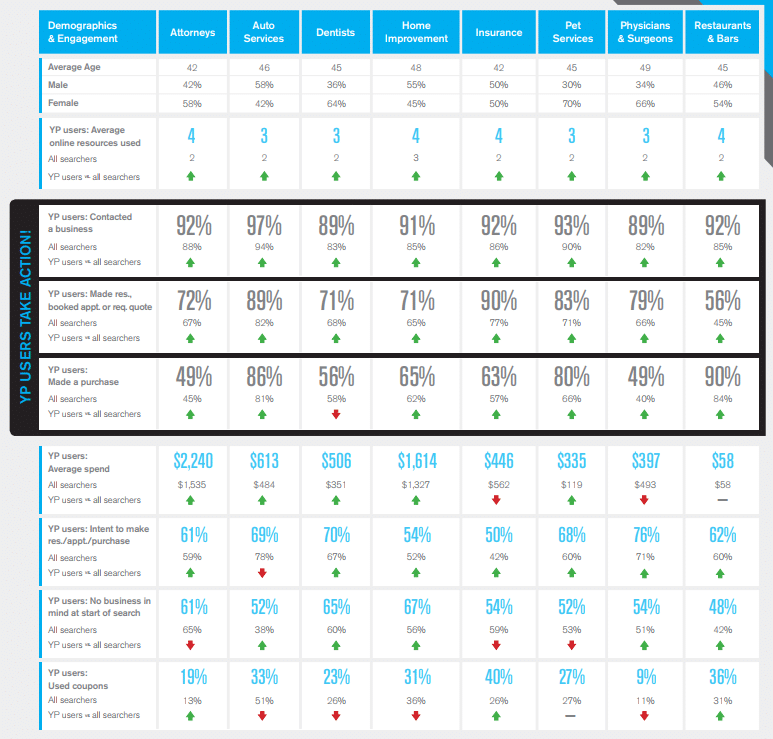
Pros
- Customers are more responsive than average searchers
- YP is focused primarily on direct response
- 2 out of 3 users search with the intention of converting
- 3 out of 4 users make a purchase, either on the phone or online
- YP users tend to be 35+ years old
Cons
- Heavily dependent on search
- Traffic and market share have declined year-over-year (but not stable)
- Less focused on brand awareness
- YP users tend to be 35+ years old
Getting the most bang for your buck
YP serves a very specific age group. If your target audience fits within their core demographics, YP can generate the results you need, especially if you're goal is direct response.
But, it typically requires a lot of management.
Your campaigns will need a lot of handholding and management to ensure account managers stay in line with your campaign objectives. A set and forget approach means you're far more likely to lose money.
Hyperlocal advertising can't compete..
With traditional advertising, and it's not supposed to. If you're a hyperlocal business, you need to reach a very specific audience.
Your business is local, but you're still a tiny fish in a large ocean.
Thanks to online and offline competitors, your customers have an enormous amount of options. Low cost competitors who are eager to take a loss if it means they steal your customers.
With hyperlocal advertising, you can beat your competitors at their own game.
But, only if you're focused on the strategies and tactics that will give you the most bang for your buck. Use hyperlocal advertising and an irresistible offer to draw customers in. Become the big fish in a small pond and you'll attract the attention and desire your business needs.
About the Author
Andrew McDermott
Andrew McDermott is the co-founder of HooktoWin. He shows entrepreneurs how to attract and win new customers.






